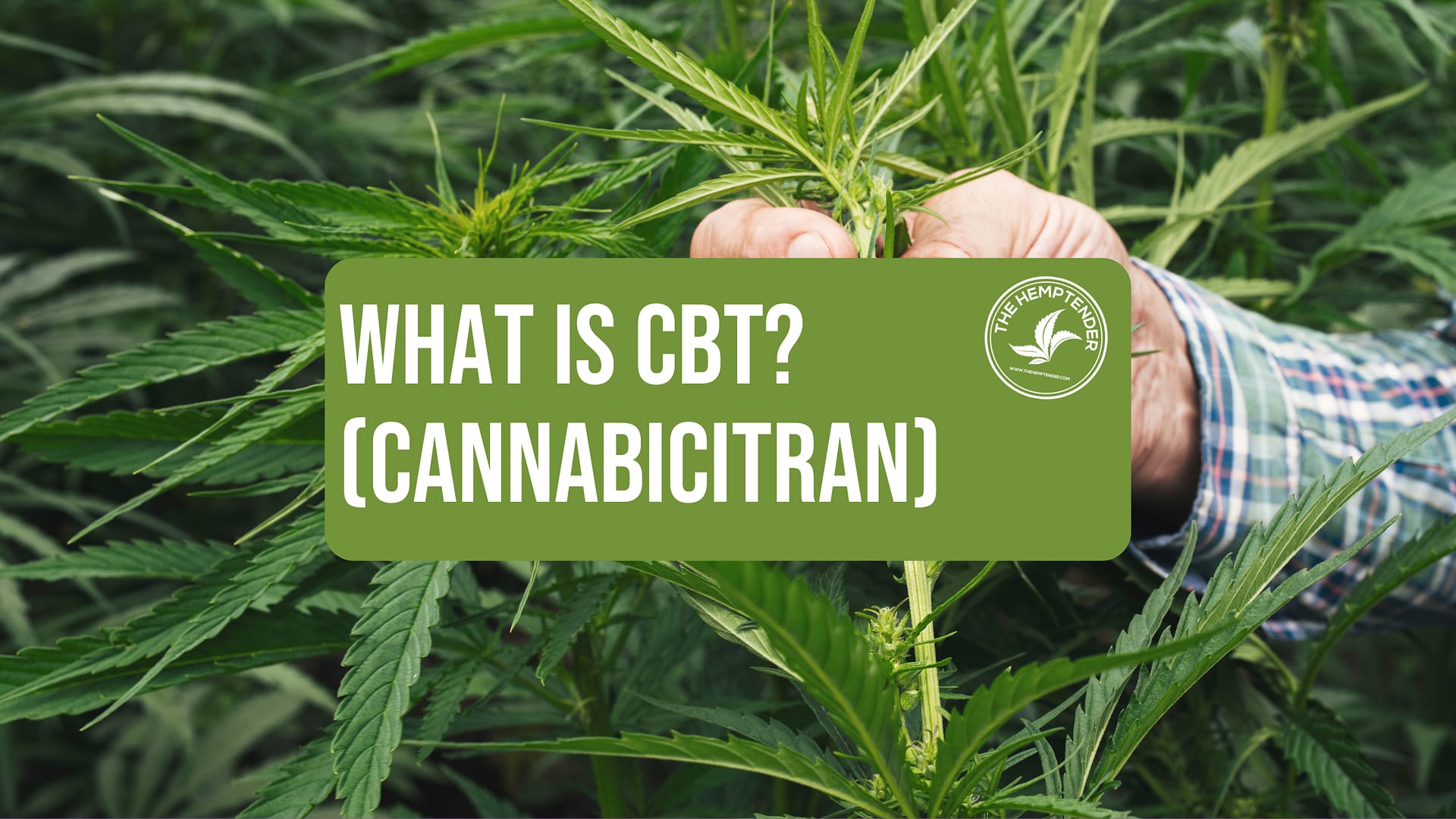A Complete Guide to Cannabicitran (CBT)

Cannabicitran, or CBT, is an intriguing but relatively rare minor cannabinoid found in hemp. Its discovery dates back to the 1970s, but it’s only recently gained attention from the scientific community. Like CBD and CBG, CBT appears to be non-intoxicating, making it an exciting subject of research in cannabinoids. In this article, we will delve into what we currently know about CBT, its potential benefits, how it compares to other cannabinoids, and where you can find it. So, let’s explore the mysteries of CBT and its role in the cannabis industry.
What is Cannabicitran (CBT)?
Cannabicitran, often referred to as CBT, is a rare but naturally occurring minor cannabinoid found in hemp. While it has been synthesized and identified since the early 1970s, its presence in the Cannabis sativa plant has only been confirmed more recently. Similar to CBD and CBG, CBT appears to be non-intoxicating, adding to its appeal in the world of cannabinoids.
CBT, also known as CBT-C, was initially named citrylidene-cannabis when first synthesized in 1971, and its natural occurrence was first detected in 1974. This intriguing cannabinoid has gained substantial attention from the scientific community since 2019, and its potential effects on the human body are still being explored.
What do we know about CBT?
While CBT may not be as familiar as CBD or THC, our understanding of this minor cannabinoid is steadily growing.
One fascinating aspect of CBT’s history is its presence in Rhododendron anthopogonoides, a plant extensively used in Traditional Chinese Medicine (TCM). This suggests that CBT has been in use for centuries, lending credibility to its modern research.
A noteworthy 2018 study shed light on CBT’s origins in cannabis. Unlike other cannabinoids like CBG, CBT is not derived from CBGa but instead from cannabichromene (CBC), a less stable cannabinoid.
Researchers have also uncovered potential effects of CBT. It appears to share characteristics with both CBD and CBG, known for relaxation and promoting balance and focus, respectively. CBT may even dampen the psychoactive effects of THC, as indicated by a 2007 study.
In the cannabis industry, CBT has found a niche as an anti-crystallization ingredient, helping compounds like CBD maintain their desired states. Moreover, a 1984 study suggested that CBT could benefit glaucoma patients without inducing intoxication.
What Does CBT Feel Like?
Exploring the effects and sensations of CBT can be a fascinating journey. While our knowledge of its effects is still developing, there are some insights based on its molecular structure and early research.
- Non-Intoxicating: Like CBD and CBG, CBT appears to be non-intoxicating, meaning it most likely doesn’t produce the euphoric “high” associated with THC. This makes it an attractive option for those seeking the potential benefits of cannabinoids without altered consciousness.
- Relaxation: Anecdotal reports from people who have tried CBT products suggest that CBT may induce a sense of relaxation, similar to CBD. Many users find CBD to be calming, making CBT potentially suitable for those looking to unwind or reduce stress.
- Balance and Focus: CBT’s effects also seem to share some similarities with CBG, known for promoting a sense of balance and focus. Users may experience enhanced mental clarity and concentration when using CBT.
- Potential THC Interaction: Early studies indicate that CBT might interact with THC in a way similar to CBD. It could potentially reduce the psychoactive effects of THC, which may be appealing to individuals who want to enjoy the benefits of THC without feeling excessively “high.”
- Unique Experiences: As CBT remains relatively underexplored, many users report unique and subtle effects that set it apart from other cannabinoids. These experiences are still being documented, and the full range of CBT’s effects is yet to be understood fully.
It’s important to remember that individual responses to cannabinoids can vary widely. Factors such as dosage, product quality, and an individual’s unique physiology all play a role in determining the effects of CBT. If you’re considering trying CBT, it’s advisable to start with a low dose and gradually increase it to assess how it affects you personally.
What are the potential benefits of CBT?
While research into Cannabicitran is still in its early stages, preliminary findings and anecdotal evidence suggest several potential benefits associated with this minor cannabinoid. Here are some areas where CBT may have a positive impact:
- Pain Management: Like many other cannabinoids, CBT may offer pain relief. Its potential to interact with the endocannabinoid system, which plays a role in pain perception, makes it a subject of interest for individuals seeking natural pain management alternatives.
- Anti-Inflammatory Properties: Inflammation is a common factor in various health conditions. CBT’s anti-inflammatory potential, similar to other cannabinoids like CBD, could make it valuable in addressing conditions with inflammatory components.
- Anxiety and Stress Reduction: CBT’s reported relaxation effects may also extend to anxiety and stress reduction. Many individuals turn to cannabinoids for their potential calming properties, and CBT may provide an additional option in this regard.
- Psychoactive Effects Mitigation: CBT’s ability to potentially dampen the psychoactive effects of THC, as indicated in some studies, might be valuable for those who want to use THC but wish to avoid its strong intoxicating effects.
- Neuroprotective Effects: Some cannabinoids have demonstrated neuroprotective properties. While more research is needed, CBT’s similarity to CBD and CBG may mean it might have implications for conditions involving neurodegeneration.
It’s essential to note that while these potential benefits are interesting, further research is required to establish CBT’s efficacy and safety conclusively. If you’re considering CBT for specific health concerns, you should consult with a healthcare professional who can provide personalized guidance based on your unique needs. Remember, cannabinoids can not treat any illness.
Should You Try CBT?
As the world of cannabinoids expands, you might be wondering whether CBT is a worthy addition to your cannabis experience. The decision to try CBT depends on your preferences and expectations, as well as the available information about this intriguing compound. However, you can currently find it in a handful of hemp products, like these 3Chi gummies.
Despite the limited research, CBT has caught the attention of adventurous cannabinoid enthusiasts eager to explore its unique potential. As we continue to unravel the mysteries of CBT, its distinctive benefits could potentially revolutionize the global cannabis industry.
One of the key factors in favor of trying CBT is its non-intoxicating nature, much like CBD and CBG. If you seek the potential benefits associated with cannabinoids without the psychoactive effects commonly associated with THC, CBT might be an appealing option.
CBT’s reported effects, such as relaxation and a sense of balance and focus, align with the attributes often attributed to CBD and CBG. If you’ve found relief or enjoyment from these other cannabinoids, CBT could offer a similar experience.
However, it’s essential to acknowledge that our current understanding of CBT is limited due to the relatively sparse research available. As a result, comprehensive anecdotal evidence about its effects is still emerging, leaving some aspects of CBT’s impact on individuals uncharted territory.
Where to find CBT?
Finding CBT, the rare and lesser-known cannabinoid, can be a bit more challenging compared to its more common counterparts like CBD and THC. However, as interest in minor cannabinoids grows, so does the availability of CBT-containing products. While CBT isn’t going to be the primary cannabinoid in hemp products until we know more about it, you can find this naturally occurring cannabinoid in a handful of products here at The Hemptender.
How does Cannabicitran compare to other cannabinoids?
Understanding how CBT compares to other cannabinoids provides valuable insights into its unique characteristics and potential advantages. Let’s explore some key comparisons:
CBT vs. CBD:
Cannabicitran bears a striking molecular resemblance to CBD, one of the most well-known cannabinoids in the cannabis plant. Both CBT and CBD share the distinction of being non-intoxicating, making them attractive options for individuals seeking therapeutic benefits without the psychoactive high associated with THC. Due to their structural and functional similarities, CBT and CBD may potentially work synergistically, offering a unique combination of effects.
CBT vs. CBG:
CBT and cannabigerol (CBG) share the commonality of being non-intoxicating cannabinoids, making them suitable choices for users who want to avoid the euphoric effects of THC. However, a significant distinction lies in their origins. While CBT is a derivative of CBG, it undergoes more extensive modifications during its development, contributing to its unique characteristics.
CBT vs. CBL:
Both CBT and cannabicyclol (CBL) originate from cannabichromene (CBC) through natural enzymatic processes within the cannabis plant. These cannabinoids share the characteristic of being non-intoxicating and hold potential therapeutic value. Their common ancestry suggests a shared basis of chemical structure and potential effects, though further research is needed to explore their distinct properties fully.
CBT vs. THC:
One of the most significant distinctions between CBT and THC, the psychoactive cannabinoid found in cannabis, is the presence of intoxicating effects. While THC is known for inducing a pronounced high, CBT does not seem to produce such psychoactive effects. From a regulatory standpoint, THC remains a Schedule I drug, subject to strict legal controls, while CBT typically falls within the unregulated category of industrial hemp products in many regions.
CBT vs. H4CBD:
Cannabicitran and H4CBD differ primarily in their origin and production. CBT is a naturally occurring minor cannabinoid, while H4CBD can only be synthesized in a laboratory setting. Both CBT and H4CBD share a sense of mystery, with limited research available on their effects and potential benefits. You can read up on H4CBD here.
Is CBT legal?
In short, yes, CBT is legal as long as it’s derived from hemp plants. CBT products are legal under the Farm Bill as long as they contain 0.3% THC or less by dry weight. However, the rules may be different in your area. Always double-check local laws and regulations before exploring CBT products.
Final thoughts: The CBT Cannabinoid
In conclusion, Cannabicitran (CBT) emerges as a captivating minor cannabinoid with characteristics reminiscent of CBD and CBG. It offers non-intoxicating effects, making it appealing for those seeking therapeutic benefits without the cognitive shifts linked to THC. CBT’s potential benefits encompass pain management, anti-inflammatory properties, stress reduction, and possibly a few more that we’ve yet to uncover. Additionally, it shows promise in moderating the psychoactive effects of THC and serves as an anti-crystallization agent in the cannabis industry. Through comparisons with other cannabinoids, we’ve highlighted CBT’s unique qualities, sparking curiosity in its role within the evolving world of cannabinoids. As research into CBT continues, we anticipate further revelations that may unlock its full potential and reshape the landscape of cannabis-based wellness and healthcare.




